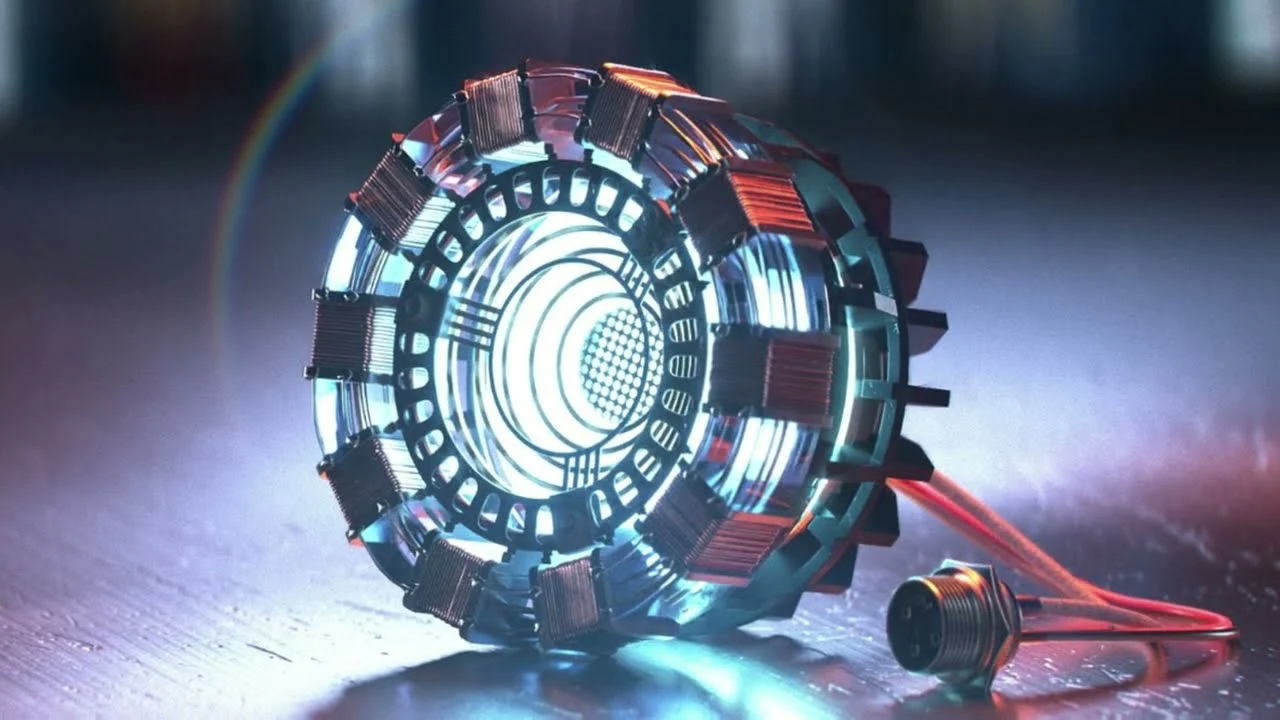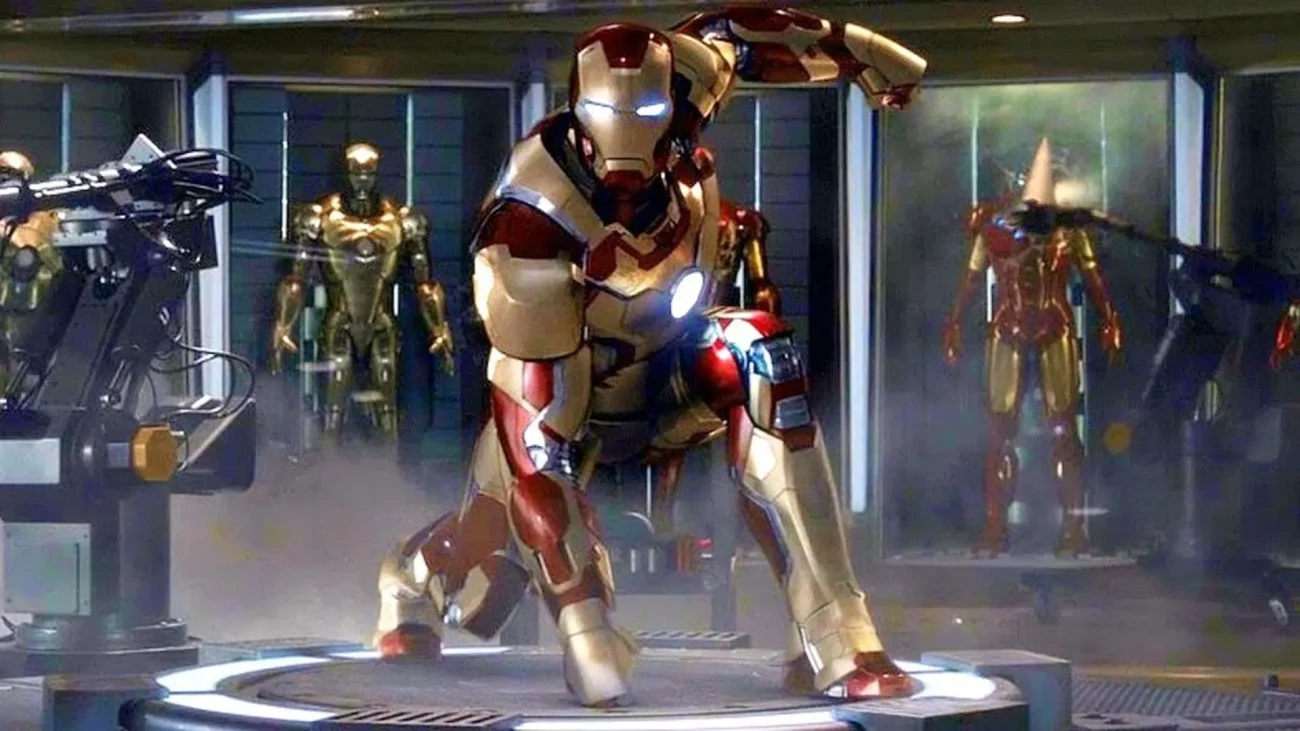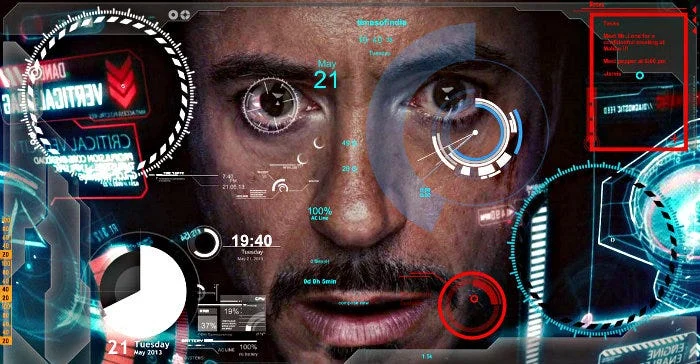
Iron Man is unique because his story focuses on how things are built and improved through hands-on work and fixing problems. Tony Stark doesn’t simply put on a suit; he creates early versions, tests them thoroughly, and constantly makes them better. He combines things like power sources, movement systems, controls, aiming tools, and life support into one complete system. Each improvement is made to overcome a specific challenge, whether it’s making the suit more durable, allowing it to operate for longer, improving how it moves, or adapting it for different tasks.
As a huge fan, I’ve always been amazed by how Iron Man’s armor changes throughout the comics, cartoons, and movies like ‘Iron Man’, ‘Iron Man 3’, and ‘Avengers: Endgame’. It starts as this big, clunky mechanical suit, but it becomes incredibly sleek and advanced, almost like it’s built from tiny nanobots that assemble on demand. Along the way, they added so many cool features – like compartments for different weapons, backup power systems, materials that change to protect him, and even AI to help him react faster. It’s all about making sure he can think and *act* instantly, and, of course, stay alive in really dangerous situations. The goal is to eliminate any delay between what he wants to do and actually *doing* it, keeping him safe out there.
The Arc Reactor Power Core

The arc reactor is a small, environmentally friendly power source. It transforms palladium-and later, an artificial element-into a lot of electricity using a process similar to fusion. When used in the suit, this power travels through internal connections to operate the suit’s motors, flight capabilities, repulsor rays, and life support systems. In earlier versions, the unit on the chest also acted as a shield to contain fragments and protect the user.
As a huge Stark fan, it’s amazing to see how he scales up the arc reactor! He’s not just making them for personal use anymore; he’s building larger versions to power entire facilities. What’s really cool is how these bigger reactors handle everything – they’ve got load balancing, meaning power gets distributed efficiently, and failover capacity, so things keep running even if one part goes down. Plus, they can actually integrate with existing power grids! And the portable ones? They’re even more impressive. He figured out how to make the cores hot-swappable, which is genius. He also designed a really clever thermal management system using heat sinks built right into the breastplate to keep things cool. Best of all, the current regulation prevents power drops – no more brownouts when he’s doing complex combat moves and everything spikes at once!
Powered Armor Exoskeleton & Servos

The armor features a combined exoskeleton design – it uses both strong, solid plates and flexible, moving joints. This design spreads impact force across a frame that boosts the wearer’s strength. Powerful, small motors and rotating mechanisms at the shoulders, hips, knees, and ankles provide lifting power and enhanced movement. Additionally, shock-absorbing materials are incorporated to shield against forceful impacts and kinetic energy.
Sensor-based motor control constantly checks joint positions and the amount of force being applied, which stops the suit from overextending or the motors from locking up. The suit’s power boost adjusts to the pilot’s desired movements, turning small actions into larger ones, making it feel natural and effortless to control. Even if some parts are damaged, backup systems in the movement components ensure that the suit can still function, at least partially.
Repulsor Gauntlets and the Unibeam

As a critic, I was particularly impressed with the repulsors. These aren’t just hand-mounted blasters; they’re incredibly sophisticated. They fire focused energy pulses from the palms, handling everything from fine adjustments in flight to serious offensive power. What really stood out is how intelligently they work – the system constantly calculates the pilot’s stance, center of mass, and even manages recoil to keep things stable. It’s not just about brute force, either. The energy modulation is key – you can switch between broad blasts to control an area and tightly focused beams to really punch through armor. It’s a really versatile system.
The unibeam located in the chest is a more powerful energy source directly connected to the primary power system. It’s generally used for quick, intense bursts of energy because of the heat it generates. To avoid damage, it includes heat spreaders and is designed to fire for limited durations. The targeting system works with the helmet’s HUD to calculate distances and identify the most dangerous threats.
Flight System, Stabilizers, and Maneuvering

The main source of lift is the boot thrusters, while the palm repulsors work like steering jets to control the direction of movement – specifically pitch, roll, and yaw. The flight control system combines data from inertial sensors with feedback from gyroscopes to keep the craft stable at different speeds and heights. Small gimbals within the thrusters allow for precise control of position while hovering and quick changes in direction.
A streamlined design minimizes air resistance and shaking, and smart control systems adjust for side winds and turbulent air left by other aircraft. If an engine fails, pre-planned procedures kick in, either initiating a controlled descent like an autorotation or using reverse thrusters to slow down before landing.
Nanotech “Bleeding Edge” Armor

More advanced suits now utilize programmable nanomaterials kept in small containers that spread across the body when activated. These tiny machines, called nanites, create protective plates, internal bracing, and even tools or weapons, changing their configuration based on damage or what the mission requires. This means damaged parts can be quickly fixed in the field, without needing to go back to a repair shop.
Deciding how to use resources is a key strategy: building a large cannon or shield uses up nanites that could have been used to strengthen other defenses. The system constantly checks for overheating and power usage, moving nanites around when certain areas get too hot to prevent widespread failures. Thermal limits and power draw are monitored continuously, recalling or redistributing nanites when hotspots exceed safe thresholds to avoid cascade failures. This ensures that nanite mass isn’t spread too thin.
AI Co-Pilots: J.A.R.V.I.S. and F.R.I.D.A.Y.

J.A.R.V.I.S. and then F.R.I.D.A.Y. act as complete operating systems, planning missions and analyzing potential threats in real time. They quickly process information from sensors, keep track of the surrounding environment, and adjust the suit’s settings-all faster than a person could. The voice and heads-up display (HUD) interfaces help reduce the workload for the person wearing the suit by highlighting the most important warnings and choices.
As a huge fan, I’m amazed by what these AIs do! They basically handle *everything* related to staying connected – managing communications, keeping data secure with encryption, and combining info from all sorts of sources like external networks, drones, and satellites. What’s even cooler is they can safely test potentially dangerous code, predict what the enemy might do next by running models on their behavior, and coordinate complex operations with multiple suits. And they don’t just focus on the big picture – they’re constantly monitoring the suit’s health, checking things like power levels, hydraulics, and even the environmental seals to make sure everything is running smoothly. It’s seriously impressive technology!
Helmet HUD, Sensors, and Targeting

The helmet features a heads-up display that uses augmented reality to show important information. It combines data from sources like LIDAR-like mapping, radar, thermal imaging, and regular cameras. This system displays predicted paths of movement, identifies allies and enemies, and highlights weaknesses in structures by analyzing materials and learning from past experiences.
With eye-tracking and gesture controls, pilots can choose targets and tools without taking their hands off the controls during flight or combat. The system maintains clear visibility in challenging conditions – like smoke, darkness, or intense light – through features like adjustable brightness, anti-glare coatings, and backup imaging sensors. Additionally, it stores maps directly on the device, ensuring navigation even when GPS signals are unavailable.
Life-Support, Environmental Seals, and MedTech

This suit is designed for challenging environments like high altitudes and underwater. It has a self-contained breathing system (rebreather), keeps the wearer at a comfortable temperature, and manages pressure. Filters protect against dust, chemicals, and other harmful substances. Plus, the inside is lined with materials that resist fire and reduce the force of impacts, helping to shield against explosions and intense heat.
Medical systems within the suit keep track of vital signs-like heart rate, oxygen levels, and pressure inside the skull-and will send warnings or automatically administer injections if these values become dangerous. The suit’s armor can tighten to help stabilize broken bones, release substances to stop bleeding, and provide breathable air if the outside air is unsafe.
Modular Weapons and Mission Loadouts

Iron Man’s suits are customizable, featuring attachment points and internal compartments that can hold things like small rockets, sound-based weapons, devices that disrupt electronics, or tools for cutting. He chooses the setup for each mission, carefully considering how much it weighs, how much power it uses, and how far he needs to reach to fight.
Targeting software connects each weapon system to the Heads-Up Display, which makes it possible to lock onto targets, time the firing of multiple weapons, and release countermeasures. The system also monitors ammunition levels and heat to make sure weapons stay within safe limits. Plus, quick-detach mounts let pilots quickly discard damaged or used-up weapons to improve their aircraft’s handling.
Remote Operation and Multi-Suit Protocols

Stark is able to control suits from a distance, using secure connections, quickly switching signals, and technology that prevents interference. Information sent from the suit lets the operator give instructions, while the suit itself quickly stabilizes on its own. When multiple suits work together, they share sensor information to build a more complete understanding of their surroundings and better identify potential dangers.
The “House Party Protocol” demonstrates how tasks are spread out among different units. Each unit handles a specific job – like breaching a target, providing a shield, or evacuating personnel – depending on what it’s best at and its current situation. To avoid accidents and ensure smooth teamwork during complicated missions, the system includes features like collision avoidance, preventing units from firing into each other’s paths, and keeping everyone updated on each other’s power levels.
Enjoyed the breakdown? Share your favorite Iron Man tech detail in the comments!
Read More
- Broadcom’s Quiet Challenge to Nvidia’s AI Empire
- Trump Ends Shutdown-And the Drama! 🎭💸 (Spoiler: No One Wins)
- METH PREDICTION. METH cryptocurrency
- South Korea’s KRW1 Stablecoin Shocks the Financial World: A Game-Changer?
- Gold Rate Forecast
- How to Do Sculptor Without a Future in KCD2 – Get 3 Sculptor’s Things
- CNY JPY PREDICTION
- 20 Most Cursed Productions in Movie History: From Jaws to Titanic, the Chaos Behind Iconic Films
- Investing Dividends: A Contemporary Approach to Timeless Principles
- Shiba Inu’s Netflow Drama: Bulls, Bears, and 147 Trillion SHIB
2025-10-02 10:21